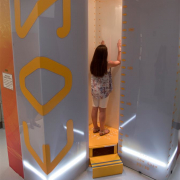The Hereditary Nature of Adolescent Spinal Deformities-A study of over 600,000 adolescents
Every year, the Italian Scoliosis Study Group selects the best published papers on conservative spine treatment from the global scientific literature.
Here is the abstract from one of these papers.
The Hereditary Nature of Adolescent Spinal Deformities-A study of over 600,000 adolescents
Yair Zloof, Ran Ankory Amit Elbaz Braun, Maya Braun, Shlomi Abuhasira, Naama Schwartz, Dotan Yaari, Elon Glassberg, Amir Shlaifer
Spine, 2022 Apr. 21, PMID: 35472202, DOI: 10.1097/BRS.0000000000004355
Abstract
Study design: A cross-sectional study.
Objective: We designed this study to investigate the risk for spinal deformity among individuals whose parents had a spinal deformity.
Summary of background data: Adolescent idiopathic scoliosis and Scheuermann Kyphosis are common adolescent spinal deformities (ASD) with a significant impact on public health. Timely treatment with bracing is effective in halting or slowing the progression of these deformities. However, screening healthy adolescents for spinal deformities remains debatable. While the leading medical organizations endorse contradictory positions regarding the screening of the general population, there is a consensus that screening of targeted population should be considered. Due to their genetic predisposition, adolescents whose parents suffer from a spinal deformity may be candidates for targeted screening.
Methods: We conducted a nationwide, population-based study of 611,689 Israeli adolescents, aged 16-19 years old, who were screened for spinal deformities between the years 2000-2019. The data for this study were derived from a central database containing medical records of all adolescents who were examined preliminary to mandatory military service. In our study, ASD were strictly defined by plain X-ray.
Results: Compared with adolescents of whose parents did not have a spinal deformity, the odds ratios for ASD among adolescents whose father, mother or both parents had spinal deformity were 1.46, 1.74, and 2.58, respectively. These ratios were consistent in multivariate models.
Conclusion: We have found a considerable increased risk for adolescent spinal deformities among adolescents whose parents suffered from spinal deformities. We believe that our findings should serve the leading medical organizations when considering the screening of targeted populations.




Leave a Reply
Want to join the discussion?Feel free to contribute!